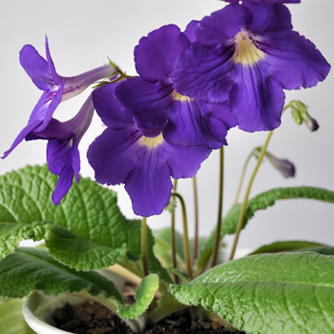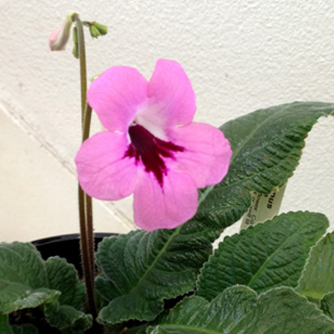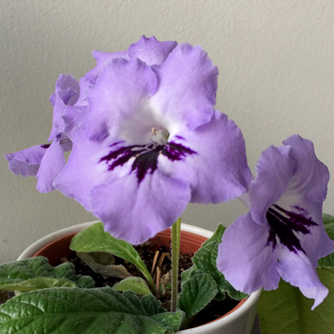Streptocarpus
BackStreptocarpus hybrids are irresistible indoor plants with enormous stunning flowers for months at a time. And they’re easy to grow once you have a few tips under your belt.
Streptocarpus hybrids are mostly bred from Streptocarpus rexii, a native of South Africa, and are sometimes called Cape Primrose or Nodding Violets. They have similar growing needs to African violets and florist gloxinias and all belong to the Gesneriaceae family.
The flower stalks sit high above the foliage and carry clusters of flowers. Individual flowers are trumpet shaped and can be up to 7cm across. Flowers range from white to pink to purple and often have a splash of darker colour in their throats.
Potting Tips
Streptocarpus have a small, shallow root system and are best grown in small pots (15cm or less). They need good drainage so use a special African violet potting mix or have a go at making your own. Start with a premium quality potting mix and simply add 20-30% vermiculite or perlite. Easy! Take care when repotting as the foliage is brittle and can break off easily.

Streptocarpus "Bright Eyes"
Correct Position
Streptocarpus need bright light to perform well but should not be exposed to direct sunlight. Be mindful of this when placing plants next to windows as the sunlight direction can change with the seasons and scorch plants. They also don’t like to be hot during summer so again you might need to move them to a cooler position during this period.
If you live in a frost-free area streptocarpus can be grown outdoors in a sheltered position with good drainage. As they make such a showy indoor plant though it seems a shame to hide them away in the garden!
Watering Steptocarpus
Allow plants to dry out slightly between waterings as over watering will result in root rot and plant death. As a guide water once a week during summer and only every 2-3 weeks during winter. If in doubt don’t water. Better to have a wilting plant that bounces back rather than one which rots away!
Fertilising Streptocarpus
To enjoy flowers from spring to autumn you really need to fertilise streptocarpus. Without regular fertilising the number of flowers dramatically reduces. Apply a solution of OCP eco-aminogro and OCP eco-seaweed every two weeks throughout the growing season (spring to autumn). Cut back to only once a month in winter when plants slow down.

Streptocarpus coming into flower
Pest & Disease Problems with Streptocarpus
Mealybug is the main thing to watch out for if plants are kept indoors. Outdoor plants are vulnerable to caterpillar attack and sometimes aphids, mites and whitefly. These can all be controlled with OCP eco-neem.
Excess watering and/or poor drainage will cause plants to rot away as mentioned earlier. Always plant into very well drained soil and go easy on the water during winter when they aren’t very active.
Sometimes fungal problems occur on the foliage due to poor air circulation around the plants or again from over watering. Move into a better spot to improve circulation and ease up on the watering.
Where To Get Them
Occasionally they appear in nurseries but sell fast and are just as quickly gone again. Another option is to contact your closest African Violet Society or attend one of their shows. Members growing African violets usually grow streptocarpus as well. Arrive early at their shows as the streps are usually the first thing to sell out.

Another showy streptocarpus


